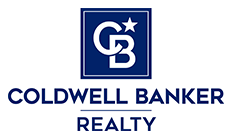Restrictions on Pets in Community Associations
Brevard County Real Estate News
Date Added: 2/26/2013
There are numerous types of rules and restrictions which community associations may wish to consider and implement regarding pets within the community. This article will not address the leashing of pets, or rules requiring owners to pick up after their pets, since these are commonly understood requirements. Instead, some of the alternatives for regulating pets will be briefly discussed below It is important to distinguish between rules adopted by the Board of Directors, and restrictions contained in the Declaration. If the issue of pets is addressed in the Declaration, the Board cannot adopt rules which are inconsistent with the rights given to owners under the Declaration, and an amendment to the Declaration may be needed. Associations need to review this issue with their legal counsel.
- TYPES OF PETS - Restrictions should address not only dogs and cats, but also birds and other types of pets, and should also clarify which type of animals are prohibited. A very important point for associations to keep in mind is that if the restrictions are not specific as to the types of pets which are permitted and prohibited, an association may encounter problems with “selective enforcement.” This results when associations attempt to enforce restrictions against one type of pet when other types are also prohibited (e.g., if the documents do not permit any pets, and the association does not enforce restrictions against cats, it may lose the right to enforce any restrictions against dogs as well pursuant to recent rulings).
- NUMBER OF PETS - A maximum number of pets should be specified, especially as this relates to dogs.
- WEIGHT - This is a very common but problematic restriction, which often results in selective enforcement. If restrictions set a weight limit, such as 30 pounds, it must be enforced consistently or risk being waived.
- BREEDS - Some associations prohibit certain breeds which are known to have vicious or dangerous tendencies. Pit Bulls (and mixes of this breed) are the most common due to their vicious and unpredictable tendencies, and powerful bites. Other breeds which are sometimes prohibited include, but are not limited to, Doberman Pinschers, Rottweilers and German Shepards. It is possible to construct rules so that certain breeds are identified as being “potentially dangerous.”
- INSURANCE AND LIABILITY - Some associations require pet owners to maintain liability insurance. Associations should also be aware of the fact that if a dog is known to have dangerous tendencies, and the Association does not take action to attempt to have the dog muzzled or removed from the community, the association may also have liability for any injuries or damages caused.
- FAIR HOUSING LAWS - Associations also need to be aware of the fact that certain pets may be required to be permitted as a “service animal” or “emotional support animal” for persons with disabilities under state and federal fair housing laws. A homeowner seeking such an exception must present certain evidence, and cannot simply characterize his pet as a service or support animal.
There are many other aspects of pet rules and restrictions which associations may wish to consider. Please consult your association attorney as this relates to your own community and governing documents.

Nick Farinella, Realtor® - 34 Years in Business - 321-543-1685
Copyright © 2024 NicksRE.com | Created by Fencl Web Design | RETS


